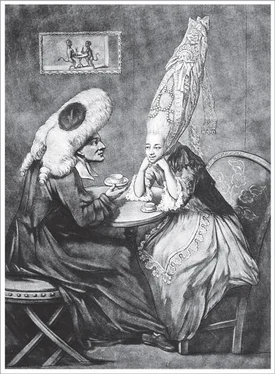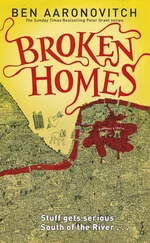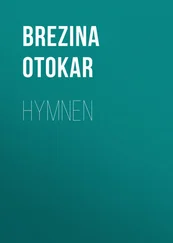Bill Bryson - At Home
Здесь есть возможность читать онлайн «Bill Bryson - At Home» весь текст электронной книги совершенно бесплатно (целиком полную версию без сокращений). В некоторых случаях можно слушать аудио, скачать через торрент в формате fb2 и присутствует краткое содержание. Жанр: Старинная литература, на английском языке. Описание произведения, (предисловие) а так же отзывы посетителей доступны на портале библиотеки ЛибКат.
- Название:At Home
- Автор:
- Жанр:
- Год:неизвестен
- ISBN:нет данных
- Рейтинг книги:4 / 5. Голосов: 1
-
Избранное:Добавить в избранное
- Отзывы:
-
Ваша оценка:
- 80
- 1
- 2
- 3
- 4
- 5
At Home: краткое содержание, описание и аннотация
Предлагаем к чтению аннотацию, описание, краткое содержание или предисловие (зависит от того, что написал сам автор книги «At Home»). Если вы не нашли необходимую информацию о книге — напишите в комментариях, мы постараемся отыскать её.
At Home — читать онлайн бесплатно полную книгу (весь текст) целиком
Ниже представлен текст книги, разбитый по страницам. Система сохранения места последней прочитанной страницы, позволяет с удобством читать онлайн бесплатно книгу «At Home», без необходимости каждый раз заново искать на чём Вы остановились. Поставьте закладку, и сможете в любой момент перейти на страницу, на которой закончили чтение.
Интервал:
Закладка:
The Jutes are completely mysterious. They are usually presumed to have come from Denmark because of the presence there of the province called Jutland. But a problem pointed out by the historian F. M. Stenton is that Jutland got its name long after any Jutes had departed, and naming a territory after people who are no longer there would be an act unusual to the point of uniqueness. In any case, Jótar , the Scandinavian word from which Jutland is derived, doesn’t necessarily, or even plausibly, have anything to do with any group or race. Bede’s reference is in fact the only mention of Jutes anywhere, and he never cites them again. Some scholars think that the reference is an interlineation added by a later hand anyway and has nothing to do with Bede at all.
The Angles are only a little less obscure. They do get mentioned from time to time in European texts, so at least we can be confident that they really existed, but nothing about them suggests any importance. If they were feared or admired, it was within very small circles. So it is more than slightly ironic that it was their name that came, more or less accidentally, to be attached to a country that they may only lightly have helped form.
That leaves only the Saxons, who were unquestionably a presence on the continent—the existence in modern Germany of various Saxonys, Saxe-Coburgs, and the like attests to that—though not a particularly mighty one either, it seems. The best Stenton can say for them is that they were “the least obscure” of the three. Compared with the Goths sacking Rome or the Vandals sweeping over Spain, these were pretty marginal people. Britain, it seems, was conquered by farmers, not warriors.
The invaders brought almost nothing that was new—just a language and their own DNA. No aspect of their technology or mode of living offered even a moderate improvement over what existed already. They can’t have been well liked. They don’t seem to have been very impressive. Yet somehow they made such a profound impact that their culture remains with us, more than a millennium and a half later, in the most extraordinary and fundamental ways. We may know nothing of their beliefs, but we still pay homage to three of their gods—Tiw, Woden, and Thor—in the names of our three middle weekdays, and eternally commemorate Woden’s wife, Frig, every Friday. That’s quite a line of attachment.
They simply obliterated the existing culture. The Romans had been in Britain for 367 years and the Celts for at least a thousand, yet now it was as if they had never been. Nothing like this happened elsewhere. When the Romans left Gaul and Spain, life went on much as before. The inhabitants continued to speak their own versions of Latin, which were already evolving into modern French and Spanish. Government continued. Business thrived. Coins circulated. Society’s structures were maintained. In Britain, however, the Romans left barely five words and the Celts no more than twenty, mostly geographical terms to describe features specific to the British landscape. Crag , for instance, is a Celtic word, and so is torr , meaning a rocky outcrop.
After the Romans withdrew, some Celts fled to France and founded Brittany. Some no doubt fought and were slain or enslaved. But the greater number seem simply to have accepted the invasion as an unhappy fact and adjusted their lives accordingly. “It didn’t have to involve a lot of slaughter or bloodshed,” my friend Brian Ayers, the former county archaeologist for Norfolk, told me one time as we stood looking at the field beyond my house. “Probably one day you would just look out in your field and see there were twenty people camped there, and gradually it would dawn on you that they weren’t about to go away, that they were taking your land from you. There were no doubt some bloody clashes here and there, but on the whole I think it was just a matter of the existing people learning to adjust to dramatically changed circumstances.”
There are various accounts of battles—one at Crecgan Ford (a place of uncertain locale) was said to have left four thousand Britons dead—and legend has of course left us tales of the valiant resistance of King Arthur and his men, but legend is all there is. Nothing in the archaeological record indicates wholesale slaughter or populations fleeing as if before a storm. Not only were the invaders not mighty warriors, they weren’t even very good hunters, as far as can be told. All the archaeological evidence shows that from the moment of arrival they lived off domesticated animals and did virtually no hunting. Farming appears to have continued without interruption, too. From what the record shows, the transition seems to have been as smooth as a change of shift in a factory. That can’t have been the case surely, but what really happened we will never know. This became a time without history. Britain was no longer just at the end of the known world; now it was beyond it.
Even what we can know, from archaeology, is often hard to fathom. For one thing, the newcomers declined to live in Roman houses even though the Roman houses were soundly built, superior to anything they had had at home, and there for the taking. Instead they erected far more basic structures, often right alongside abandoned Roman villas. They didn’t use Roman towns either. For three hundred years, London stood mostly empty.
On the continent the Germanic peoples had commonly lived in longhouses—the “classic” peasant dwelling in which humans live at one end and livestock at the other—but the incomers abandoned those, too, for the next six hundred years. No one knows why. Instead they dotted the landscape with strange little structures known as grubenhäuser—literally “pit houses”—though there are sound reasons to doubt that they were houses at all. A grubenhaus consisted simply of a sloping pit, about a foot and a half deep, over which a small building was erected. For the first two centuries of Anglo-Saxon occupation, these were the most numerous and seemingly important new structures in the country. Many archaeologists think that a floor was laid across the pit, making it into a shallow cellar, though for what purpose is hard to say. The two most common theories are that the pits were for storage, the thought being that the cool air below would better preserve perishables, or that they were designed to improve air circulation and keep the floorboards from rotting. But the effort of excavating the holes—some were hewn straight out of bedrock—seems patently disproportionate to any possible benefits to air flow, and anyway it’s thought exceedingly unlikely that better air circulation would have brought either of the theorized results.
The first grubenhaus wasn’t found until 1921—remarkably late considering how numerous these structures are now known to be—during an excavation at Sutton Courtenay (now in Oxfordshire, then in Berkshire). The discoverer was Edward Thurlow Leeds of the Ashmolean Museum in Oxford, and frankly he didn’t like what he saw at all. People who lived in them had led “a semi-troglodytic existence” so squalid that “it inspires disbelief in modern minds,” Professor Leeds all but sputtered in a monograph of 1936. The occupants, he continued, lived “amid a filthy litter of broken bones, of food and shattered pottery … in almost as primitive a condition as can be imagined. They had no regard for cleanliness, and were content to throw the remains of a meal into the furthest corner of the hut and leave it there.” Leeds seems to have seen grubenhäuser almost as a betrayal of civilization.
For nearly thirty years this view held sway, but gradually authorities began to question whether people really had lived in these odd little structures. For one thing, they were awfully small—only about seven feet by ten, typically—which would make a very snug house even for the meanest peasants, particularly with a fire burning. One grubenhaus had a floor area that was nine feet across, of which just over seven feet was occupied by a hearth, leaving no room at all for people. So perhaps they weren’t habitations at all, but workshops or storage sheds, though why they required a subterranean aspect may well permanently remain a mystery.
Читать дальшеИнтервал:
Закладка:
Похожие книги на «At Home»
Представляем Вашему вниманию похожие книги на «At Home» списком для выбора. Мы отобрали схожую по названию и смыслу литературу в надежде предоставить читателям больше вариантов отыскать новые, интересные, ещё непрочитанные произведения.
Обсуждение, отзывы о книге «At Home» и просто собственные мнения читателей. Оставьте ваши комментарии, напишите, что Вы думаете о произведении, его смысле или главных героях. Укажите что конкретно понравилось, а что нет, и почему Вы так считаете.












